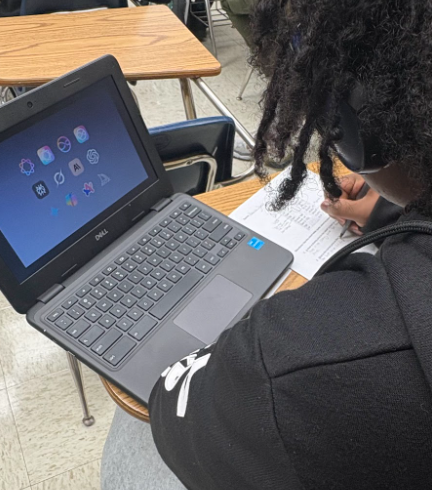
Did you know that in U.S. schools, 92% of teachers and students use AI? In the past three years, particularly since the launch of OpenAI’s ChatGPT, artificial intelligence (AI) has seen an explosion in popularity. This has particularly applied to education, with a survey of teachers and students reporting that 92 percent use AI, with half of students using it weekly. Many cite it as a useful tool for enhancing their output, but others have concerns about its long-term effect on educational institutions.
The most common form of AI is large language models. Large language model AIs are trained on a data set of internet content, enabling them to provide answers on a wide array of topics. This can be useful, but the input data is not always reliable, creating issues of veracity. These AIs can be used to write and refine essays, solve math problems, and explain processes to students. AIs have many proponents who believe that they can be a valuable tool, while others worry that they are making students uncreative and reliant on outside assistance.
Among those concerned are the teachers, who are witnessing direct impacts in the classroom. The high usage of AI is affecting all schools, as Mr. Matthew Levy, a history teacher at ERHS, noted that he has “caught multiple students using AI for their assignments. “ Students using AI across our school environment really diminishes the potential of students. Their reliance on AI raises the question of whether the students are even learning.
Dr. Michael Shader, a social studies teacher at ERHS, shared similar concerns. He explained, “I worry about it. Are there going to be teachers?” This sentiment of AI “replacing” jobs has been common, both in education and other fields, with 52 percent of workers stating they are worried about the future impact of AI on the workplace. Despite this unease, Shader clarifies, “I think it’s a great study tool if you’re looking to get something explained to you.”
Students face a different set of circumstances, as there is often pressure to seek outside assistance from AI to achieve better grades or save time, but they risk being caught and facing repercussions. There are two types of students: some use AI heavily to help with assignments, and others use it to advance their understanding without allowing it to do their work for them. Carlos Mejia, a junior at Eleanor Roosevelt, shares that he uses AI “to help … with notes,” not for his assignments. He believes that using AI for studying is helpful, but if you are using it for your work, he expresses that he doesn’t “think that’s helping you at all because you’re not really learning, you’re just getting answers online.”
Some students use AI purely to elevate their work, with tools like Grammarly and spell checks, but that doesn’t mean students don’t use it to do their work for them. Nicolas Coman, a junior at ERHS, is also skeptical about AI and its effect on students. He asserts, “I felt that relying on [AI] would damage my skill in that subject. “ The ubiquity of AI raises questions for the education system, as it must contend with everyone having more information than ever in their pockets, and how they should change their criteria to account for this. Despite sharing the concerns that everyone interviewed had, he also sees value in it. He believes, “It is especially useful in STEM-related fields…even if it is not as effective as a human, it can help fill holes in knowledge on the spot.”
AI is one of the most paradigm-shifting technological developments in the realm of education in recent years. While many are understandably skeptical of its efficacy and impact on future generations, it does not come without its utility. While there is no way to know entirely what will happen as the technology develops, it is paramount that school systems at every level find a way to adjudicate AI use that allows healthy and constructive engagement while disincentivizing pernicious use.

